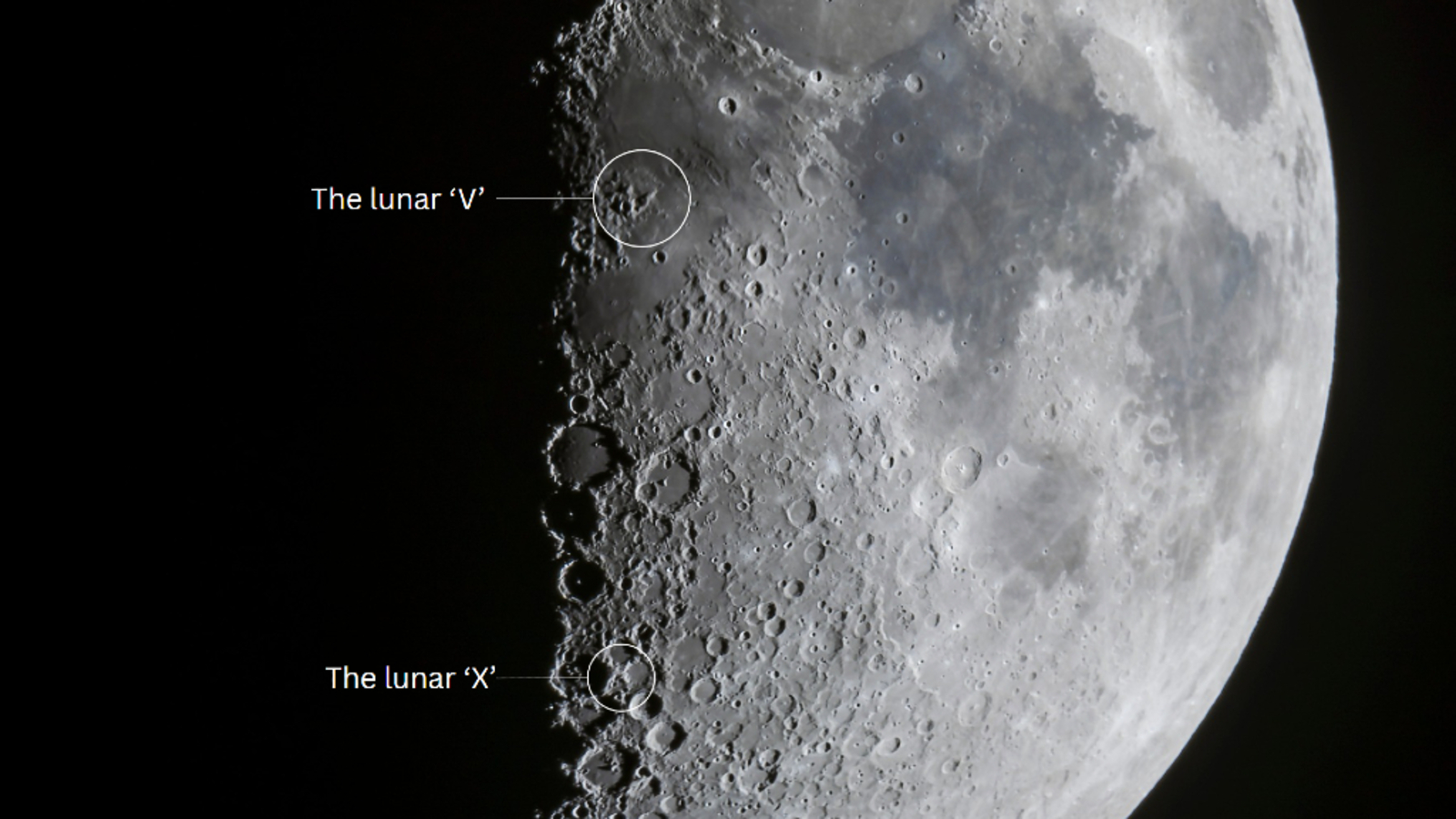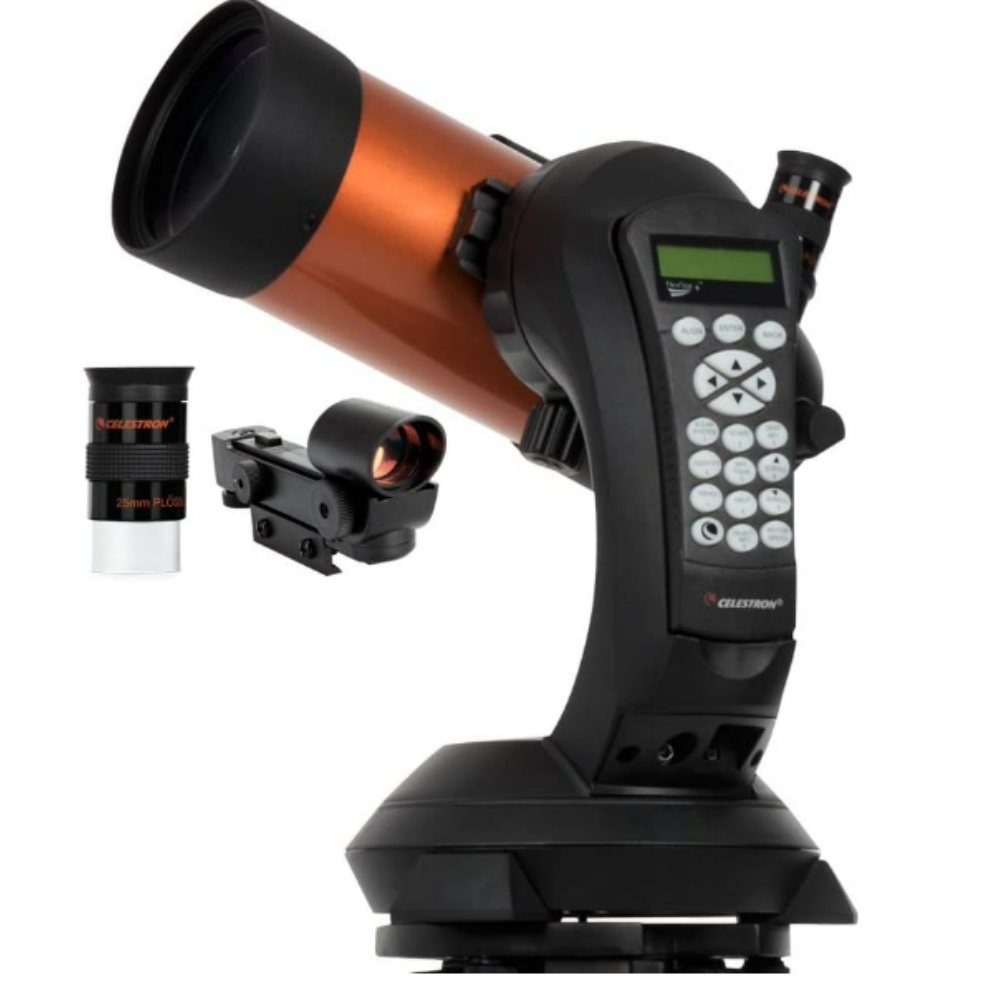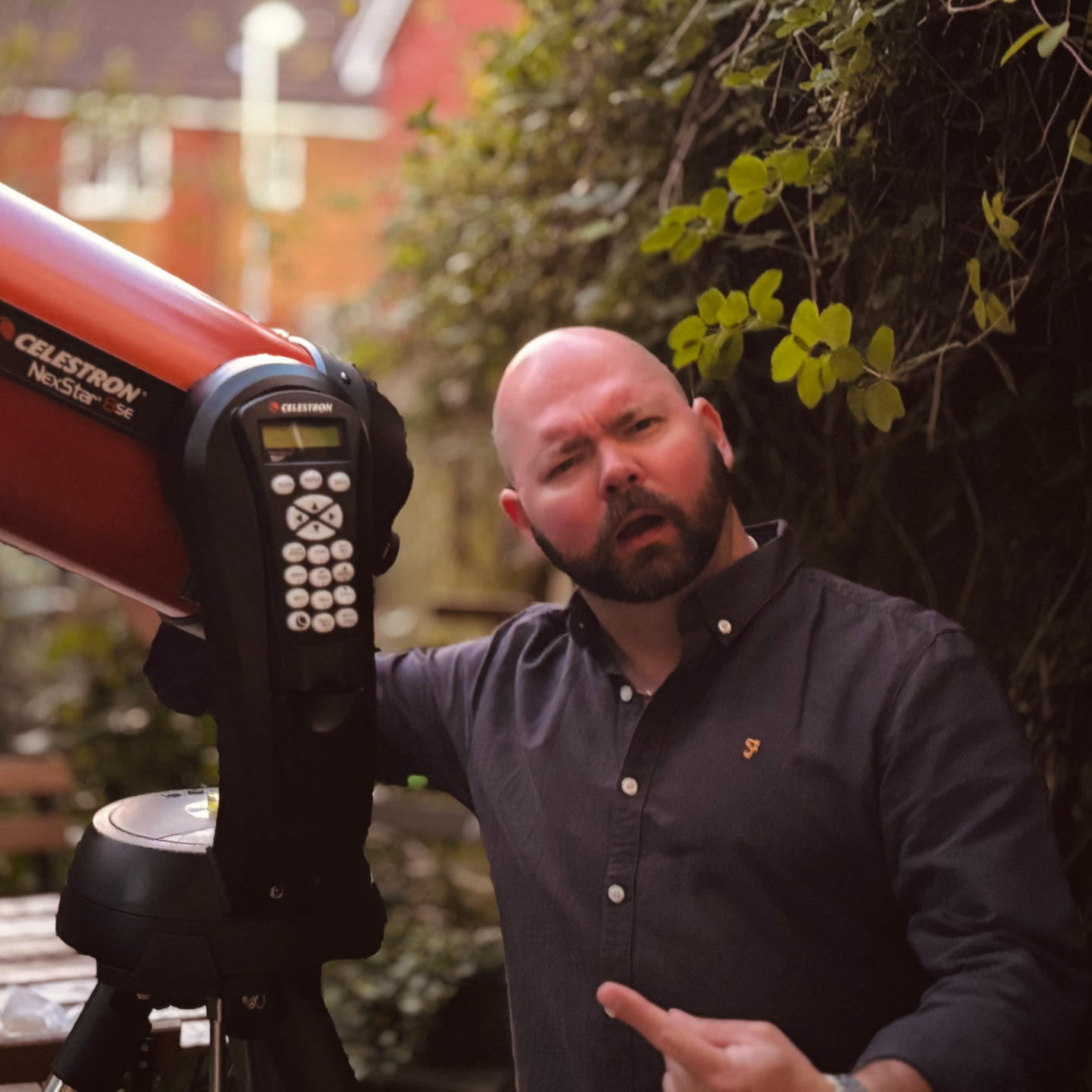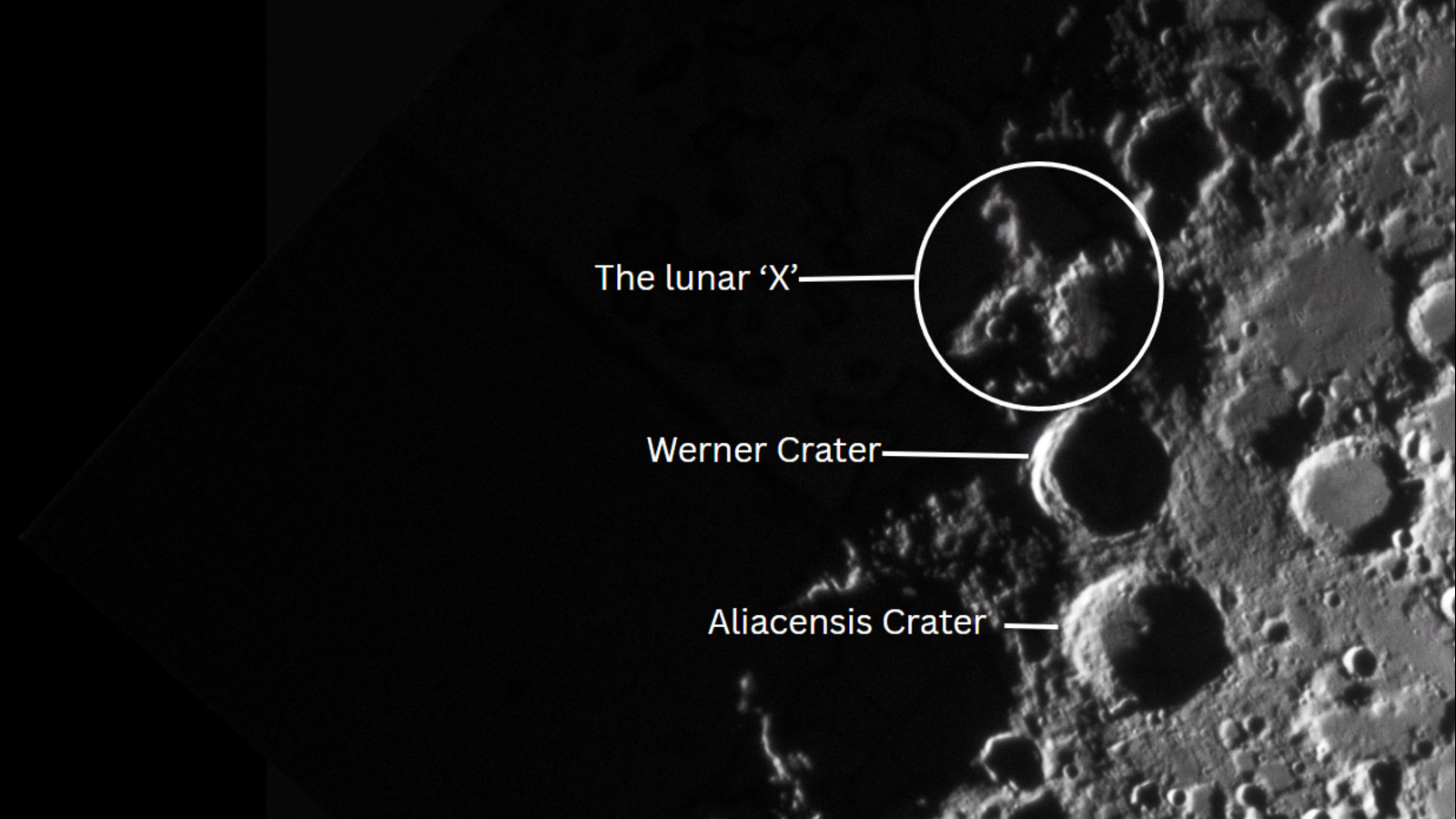An enormous 'X' and 'V' will grace the moon's surface tonight. Here's how to see them
The phenomenon is created by the shifting play of light and shadow over the lunar surface.

The night of the first quarter moon phase on July 2 presents a good opportunity to spot a colossal 'X' and 'V' emblazoned on the lunar surface.
This month's first quarter phase occurs at 11:41 p.m. EDT on July 2 (0341 GMT on July 3), at which time the right side of the half-lit lunar disk will be illuminated by direct sunlight from the perspective of viewers in the northern hemisphere on Earth.
At this time, the sun shines at such an angle to make it appear as if there is a gigantic 'V' and 'X' marking the barren lunar surface. This kind of phenomenon is referred to as a 'clair-obscur' effect and occurs when the interplay between light and shadow leads to the chance formation of familiar shapes on the moon's craggy terrain.
How to spot the letters 'X' and 'V' marking the lunar surface
The lunar letters are visible for roughly four hours in the run-up to each first quarter moon phase and are at their most impressive when seen just on the 'night' side of the terminator, with their upper reaches kissed by the sun's light. Try and find the lunar 'X' and 'V' on the lunar disk at sunset on July 2 and be sure to keep checking back to see how these shapes evolve over time.
If you miss the letters on the night side of the terminator, there's no need to lose hope, as they'll continue to be visible for a brief period after they pass to the 'day side' of the moon.
The lunar X is an optical effect formed when sunlight strikes elevated rim sections of the Bianchini, Purbach and La Caille Craters around the first quarter moon phase, according to stargazing website EarthSky.org. The feature can be found around 25 degrees south of the lunar equator close to the terminator, which is the line separating the dayside and nightside of the moon, close to the prominent Werner and Aliacensis Craters.
To find the lunar 'V', moongazers must follow the line of the terminator up to a point less than 10 degrees above the lunar equator to find the partially shadowed form of the Ukert Crater. Both objects can be spotted through a small backyard telescope with a 6-inch aperture, though a larger scope will help resolve detail in the myriad craters and broken terrain dotting the surrounding moonscapes.
Breaking space news, the latest updates on rocket launches, skywatching events and more!

Want to see the lunar X and V? The Celestron NexStar 4SE is ideal for beginners wanting quality, reliable and quick views of celestial objects. For a more in-depth look at our Celestron NexStar 4SE review.
Stargazers interested in exploring the lunar surface should check out our guides to the best telescopes and binoculars available in 2025. Photographers interested in capturing the moon's surface should also read our roundup of the best cameras and lenses for astrophotography.
This article was updated at 3:10 a.m. EDT (0810 GMT) on July 2 to change ‘June 2’ to the correct date of ‘July 2’ for the lunar event.
Editor's Note: If you capture a picture of the letters on the moon and want to share it with Space.com's readers, then please send your photo(s), comments, and your name and location to spacephotos@space.com.

Anthony Wood joined Space.com in April 2025 after contributing articles to outlets including IGN, New Atlas and Gizmodo. He has a passion for the night sky, science, Hideo Kojima, and human space exploration, and can’t wait for the day when astronauts once again set foot on the moon.
You must confirm your public display name before commenting
Please logout and then login again, you will then be prompted to enter your display name.

